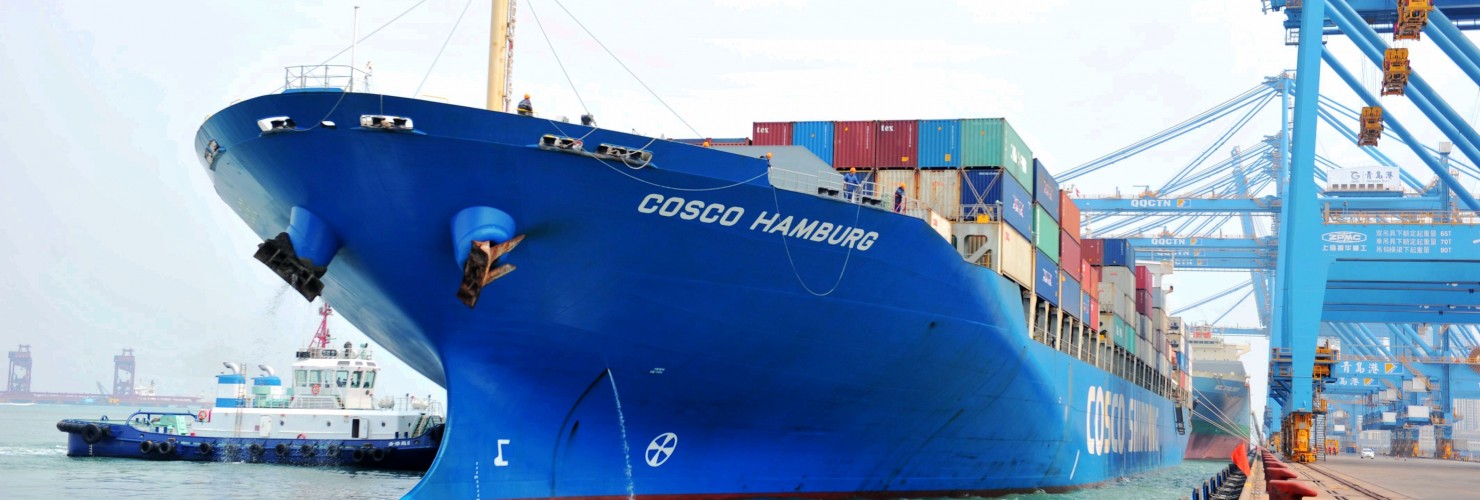

Levelling the playing field in maritime shipping
European shippers at home and abroad face increasingly unfair competition from China’s state-owned shipper, COSCO. But there are several measures the EU could use to counter this, argues Jacob Gunter.
When COSCO, China’s gigantic state-owned shipper, attempted to take shares in the Port of Hamburg recently it reignited the debate about imbalances in access to European and Chinese shipping markets. It is considerably easier for China’s shippers to access European markets than the other way around. This presents a long-term risk to European competitiveness in the industry. Europe has options at its disposal to remedy this, and the sooner it does so, the better.
The imbalance, explained
Nearly every country has cabotage laws – rules that restrict foreign-flagged vessels from engaging in domestic shipping. Most European countries are no different, though their level of restrictiveness varies, with Italy and Denmark respectively ranked as among the most and least restrictive markets in terms of logistics handling and forwarding in the OECD trade in services restrictiveness index in 2020. In general, European laws demand that only locally-flagged vessels can participate. This includes inland bodies of water, but also shipping between ports in the same country. China’s cabotage laws go one step further. Domestic shipping can only be performed by Chinese-flagged vessels that are also owned by a Chinese company.
What the laws means in practice is that, for example, a Chinese-flagged vessel cannot ship goods between Dutch cities on the lower Rhine, just as a Dutch-flagged vessel cannot ship goods along the Yangtze. The Chinese-flagged vessel would also be barred from onloading goods in Amsterdam and offloading them in Rotterdam across the North Sea, just as the Dutch-flagged vessel could not take goods from Qingdao to Fuzhou along the East China Sea.
However, whereas COSCO could invest in a subsidiary in the Netherlands and run Dutch-flagged vessels between inland and coastal ports alike, a Dutch shipper could not invest in a subsidiary in China to run Chinese-flagged vessels.
The issue extends to a practice known as international relay - the reorganizing of goods collected from multiple ports in the same country for shipment abroad. Chinese-flagged vessels can do this between ports in a single EU-member state, as well as between different countries. Three Chinese-flagged vessels owned by COSCO could load up on beer in Hamburg, cheese in Rotterdam and chocolate in Antwerp, then all meet at one port and rearrange their cargo between the three vessels so that one could go to Canada, another to South Africa and the last to Singapore.
This enhances global shipping efficiency and explains why China is eager to invest in European ports like Hamburg – a good place to transship for Northern Europe – and Piraeus – a great transshipment site for southern Europe that is also just across the sea from the Suez Canal.
Unfortunately, the same rules in China governing domestic shipping hold true for international relay – it is not enough to be Chinese-flagged, a company must also be indigenous to the market. So, three Dutch-flagged vessels owned by a Dutch shipper could not onload fruit from Qingdao, rice wine from Ningbo and tea from Quanzhou, then all shuffle cargo in a port in Mainland China for transshipment. Instead, they would need to go to a nearby country like South Korea or Japan to transship goods to send off to various destinations.
European shippers are clearly at a disadvantage to Chinese ones. This is especially pronounced due to the amount of goods that are exported out of Mainland China, which boasts nine of the world’s twenty busiest ports across a vast coastline. In comparison, the Chinese vessels going between Hamburg, Rotterdam and Antwerp all have a trip shorter than the one between Tianjin and Qingdao.
The implications of inaction
This imbalance is troublesome for European shippers both now and in the long-term. Europe currently boasts four of the five largest shipping companies in the world as measured by volume (COSCO is the third largest). For now, European shippers have scale on their side. However, with a protected domestic market, COSCO and other Chinese shipping companies are building up massive scale that can then be exerted into other markets.
Yet, the challenges presented by COSCO go beyond just this imbalance. COSCO is directly controlled by SASAC (State-owned Assets Supervision and Administration Commission of the State Council), which governs China’s biggest State-owned enterprises (SOEs), including most of the upstream value chain that feeds into COSCO. As the European Union Chamber of Commerce in China put it in their 2020 report on European involvement in the Belt and Road Initiative:
“Chinese shippers use ports built and run by SOEs using steel and cement provided by SOEs; they use vessels built by [China’s state-owned ship-building monopoly] using steel made by SOEs, which is produced using iron and coal from SOEs; all of which is financed by SOE banks.”
China’s SOEs benefit not only from subsidies, they also enjoy privileged access to factors of production like free land and dirt-cheap capital. This support can become hidden in the upstream value chain that feeds into the end user – COSCO. Additionally, anywhere along this value chain, cheaper prices and favorable deals at one or more stages can ultimately benefit shippers. When combined with the unbalanced playing field and the protected domestic market, the long-term implications for European shippers could be bleak.
A blueprint for reciprocity, positive or otherwise
While Europe discusses the fate of the Port of Hamburg, it should also consider the broader situation. If sufficient political will can be mustered, a few simple measures could be introduced within the EU.
- A common market cabotage law could be developed that allows member states to maintain their current rules domestically while also preventing Chinese shipping companies from exploiting the close proximity of European ports that lie across national borders. The EU already holds competency over air and land cabotage rules between the common market and elsewhere – why not in maritime cabotage rules?
- A reciprocity review mechanism that is similar to the proposed International Procurement Instrument could be legislated. This would allow the EU to measure the level of openness of foreign markets to European shippers, and then impose reciprocal restrictions on companies and vessels from that market.
Ideally, these measures would yield swift negotiations with Beijing that leave its shipping markets as open as those of the EU. If Beijing refuses to budge, then this toolkit would at least protect Europe’s shipping market from China’s distortions.
It would not necessarily be easy to build consensus between all member states, but if achieved, it could be a good test for the EU to build out a toolkit that advances reciprocity. Compared to other efforts at showing Beijing that Brussels can play hardball, this would be low-hanging fruit, and could do much as a confidence-building exercise in the broader competition with China in the economic arena.
This article was updated on August 30, 2021.
